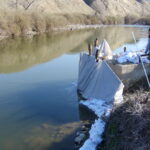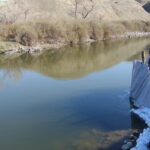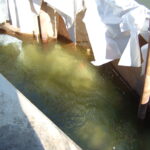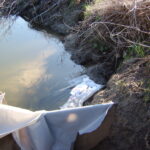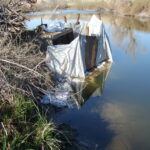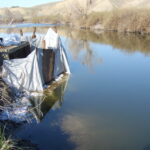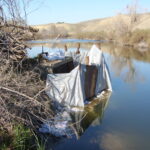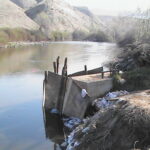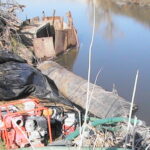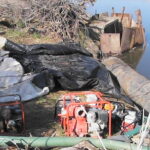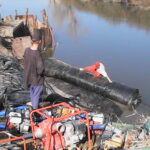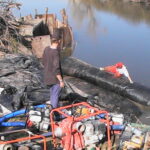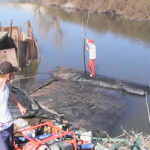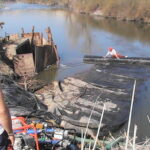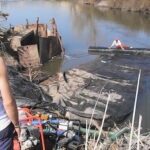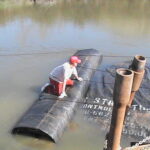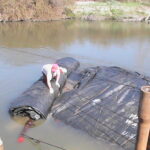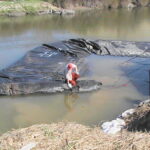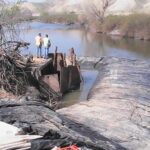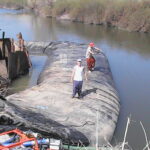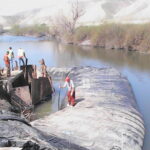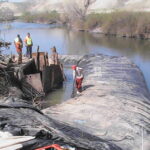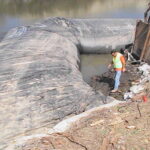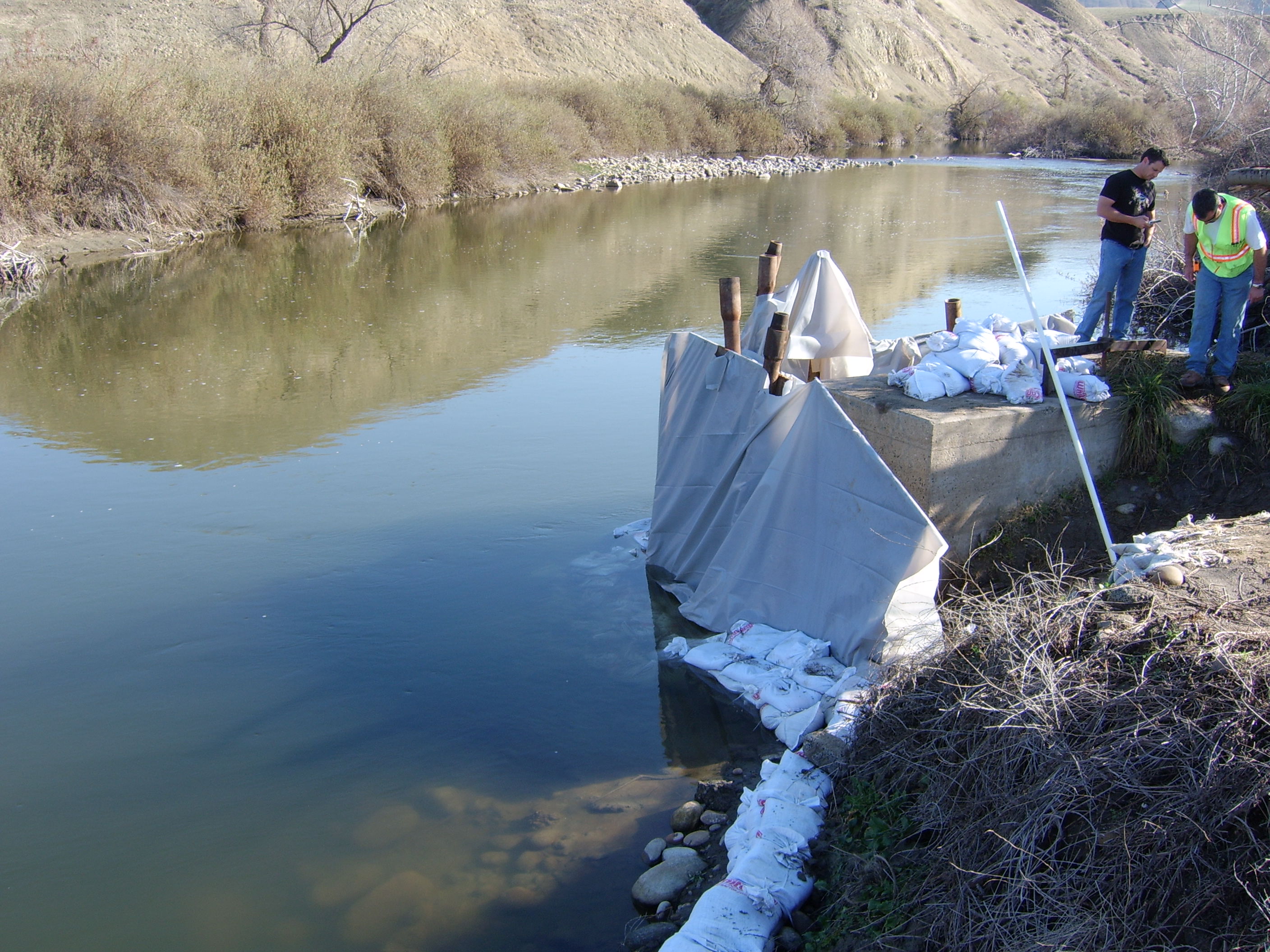
The task at hand was located at the Kern River in California. Initially, workers utilized sandbags, plastic sheeting, and steel components in an effort to de-water an intake structure for necessary repairs, as depicted in the accompanying photo.
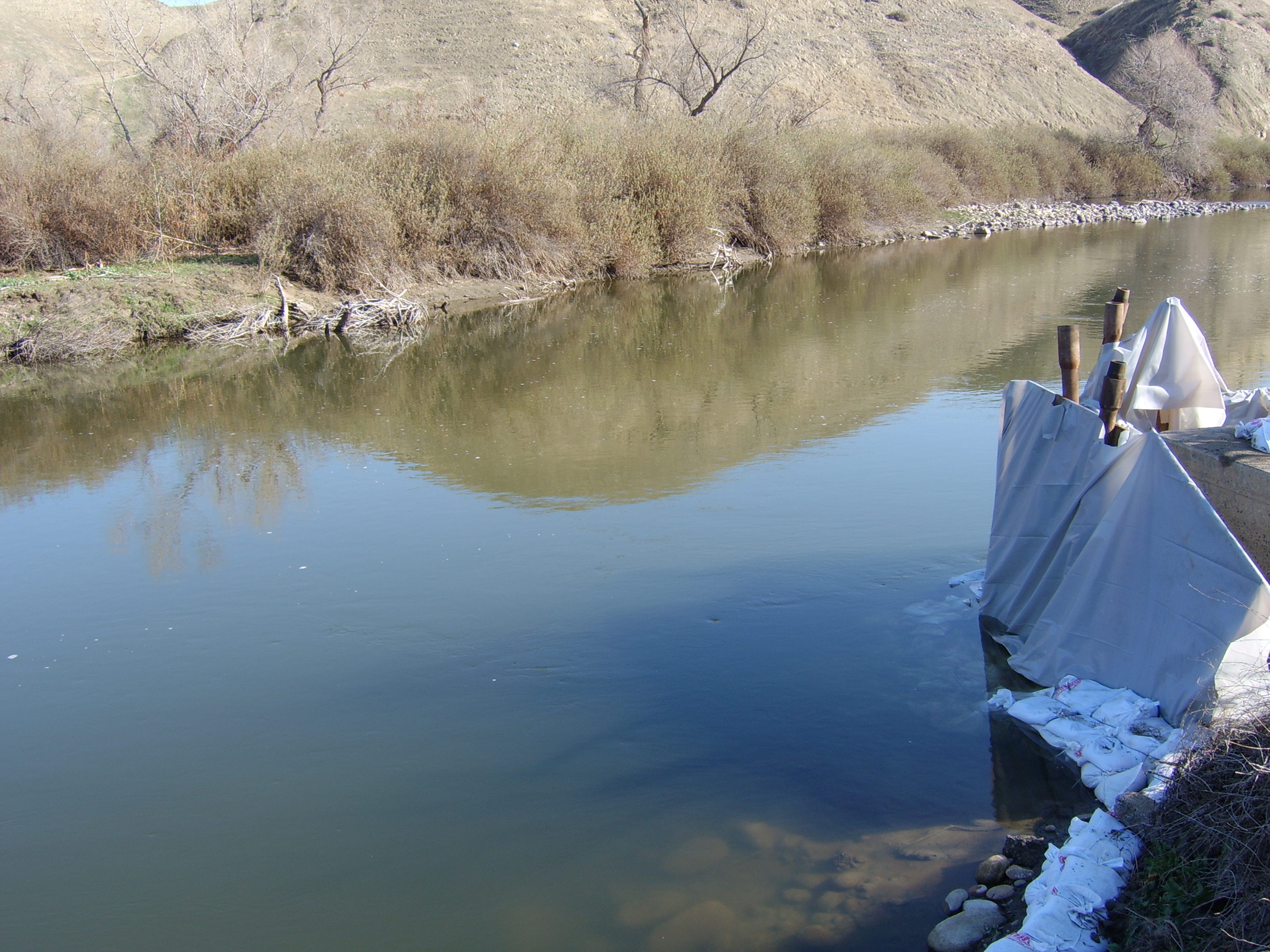
The workers soon discovered the back braking reality of technique that was chosen.
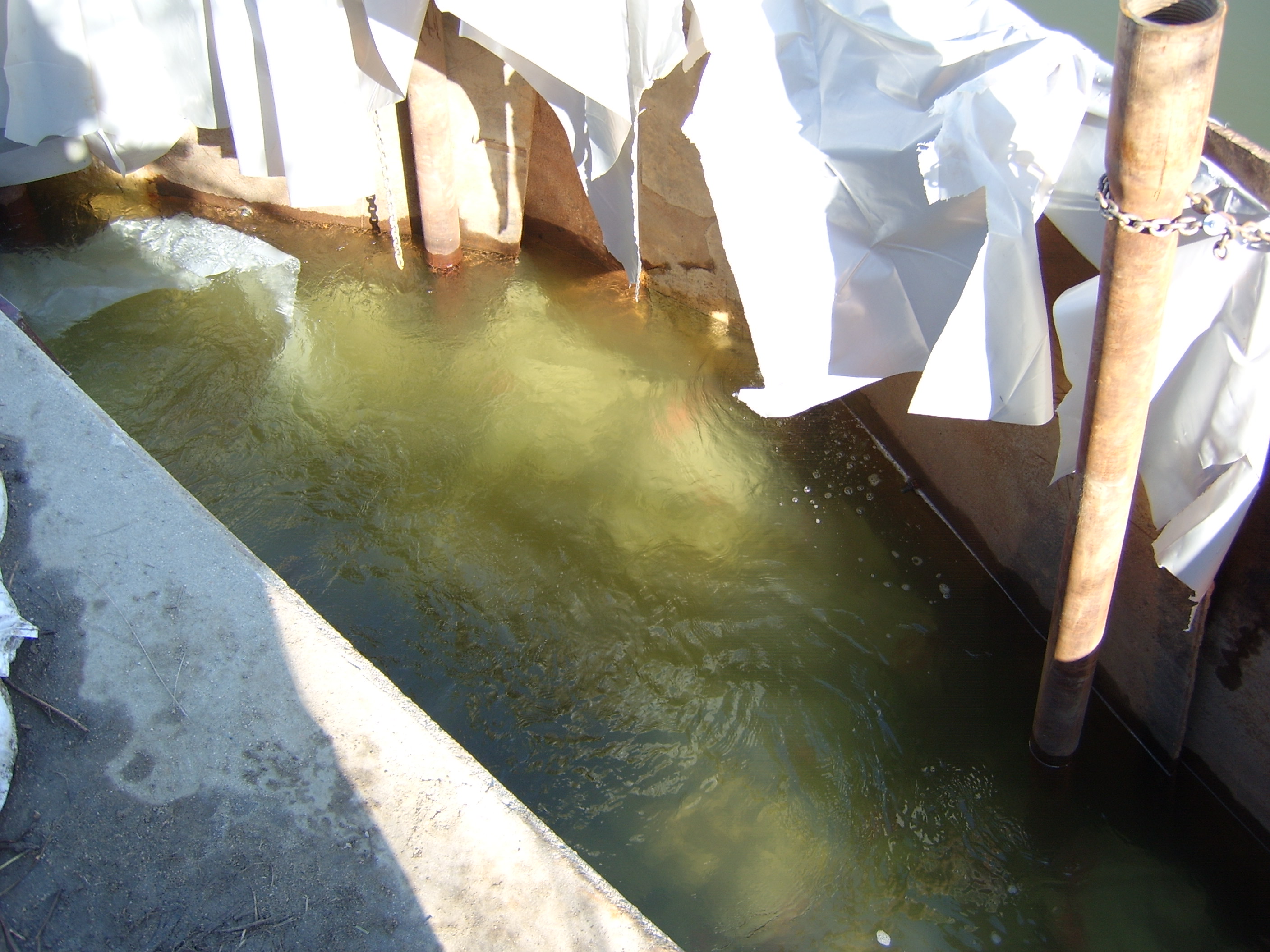
Despite the seemingly shallow water depth at the outlet of the culvert pipe requiring repairs, workers soon discovered that the bank dropped several feet as it extended into the middle of the river, causing the water to deepen significantly.
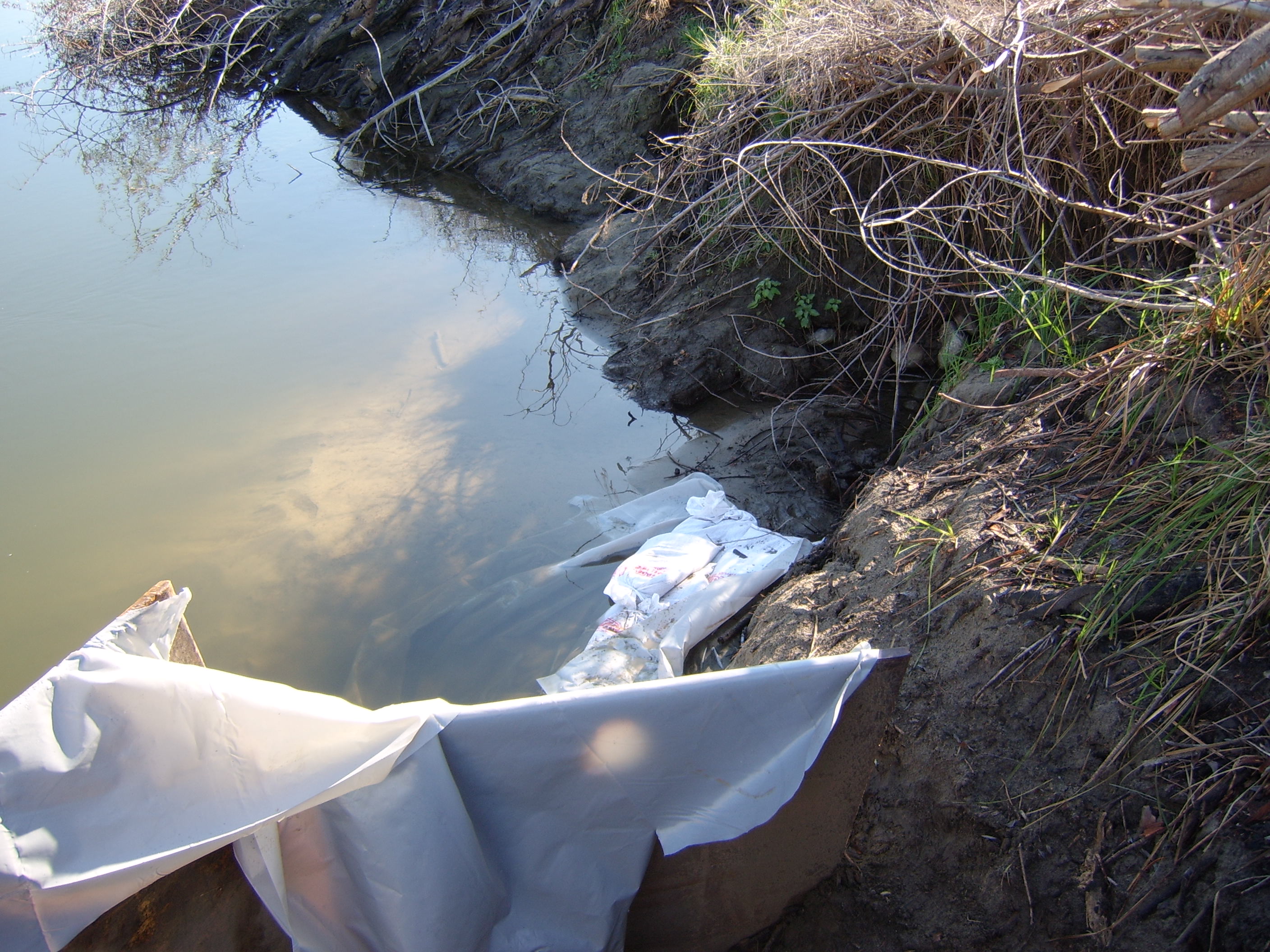
The effectiveness of the cofferdam technique could have been improved by extending the plastic sheeting several feet further into the river and ensuring it was adequately covered with numerous sandbags.
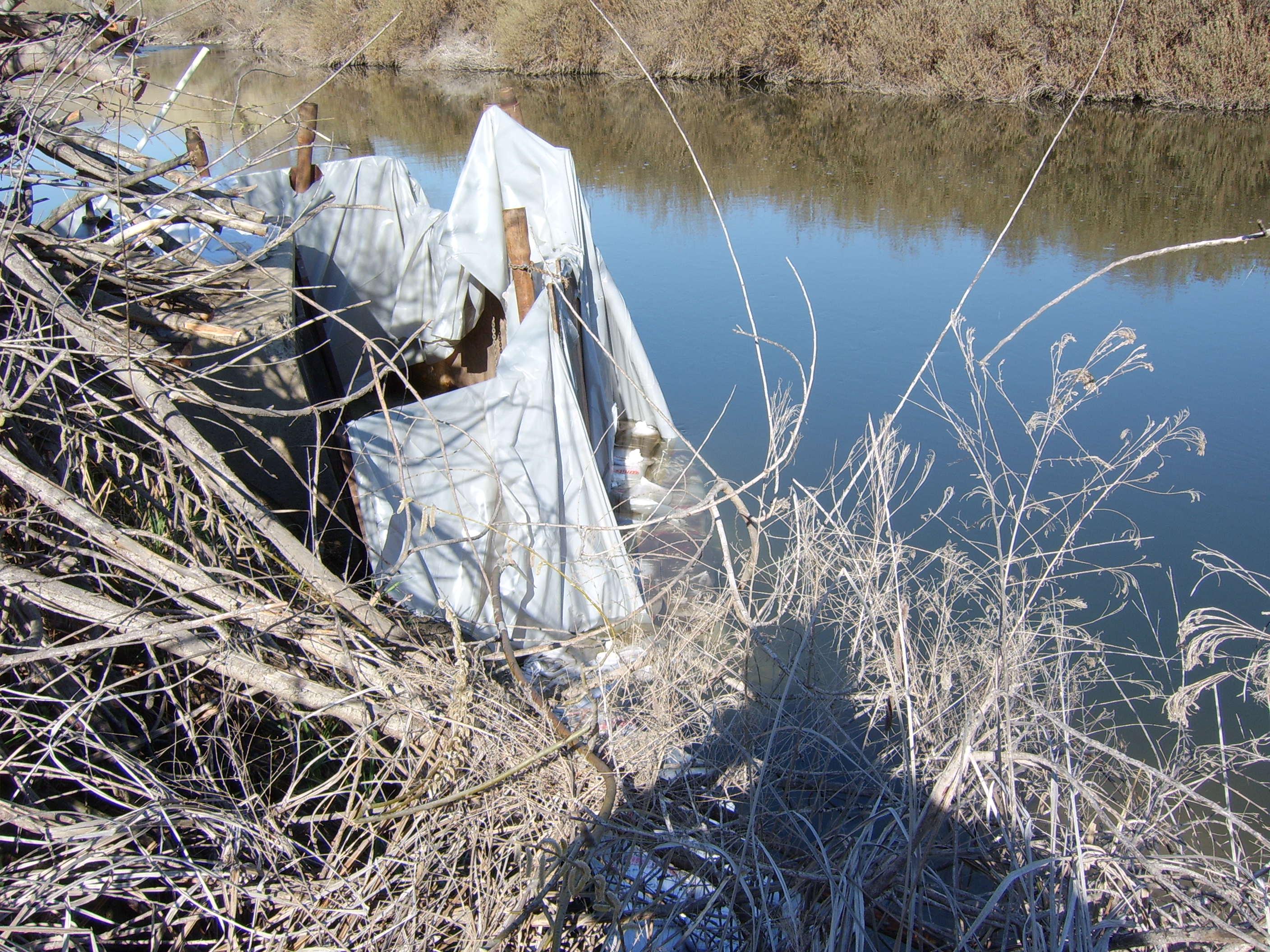
The plastic sheeting is the water tight barrier here for this type of cofferdam and so the more plastic sheeting the better. The plastic sheeting is much cheaper than the steel piping and plates.
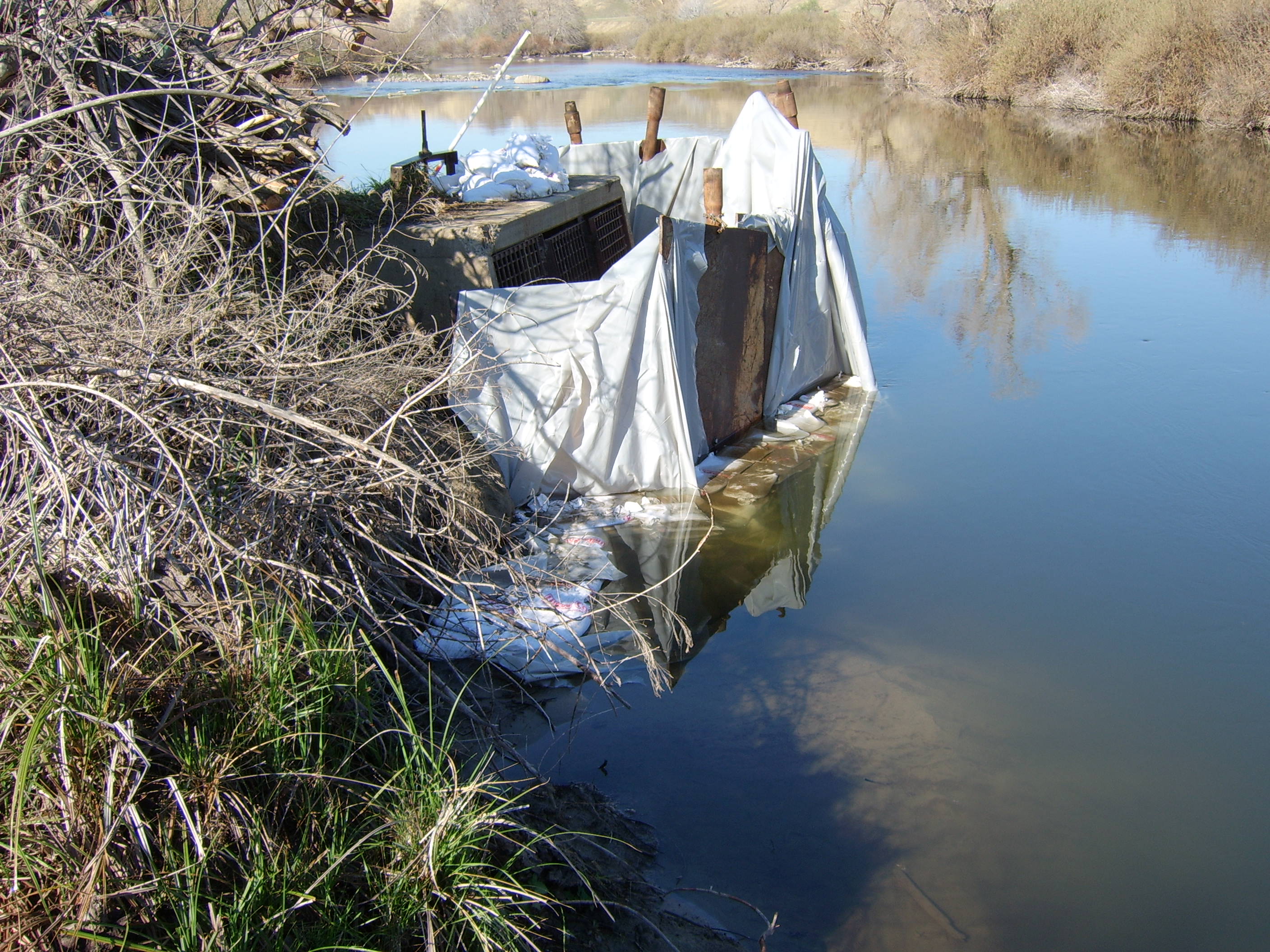
The sandbags used to secure the plastic sheeting for the cofferdam are insufficient in number. While there are currently a few hundred sandbags in place, it is recommended that there should have been several thousand to properly reinforce the structure.
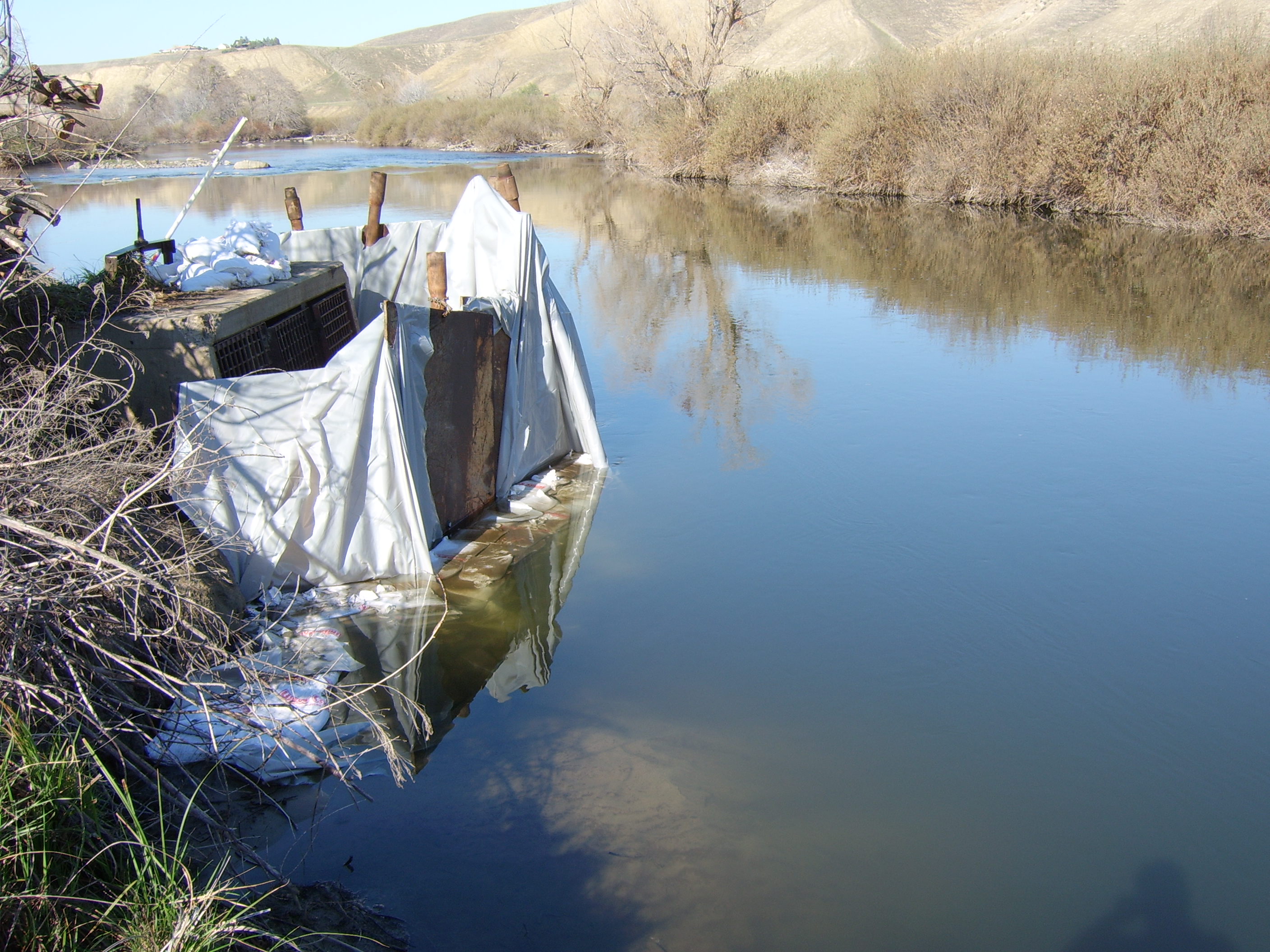
Usually, there is a plunge pool, a deep hole, located at the inlet or outlet of a pipe. Although it may be difficult to spot, there is one present in this location.
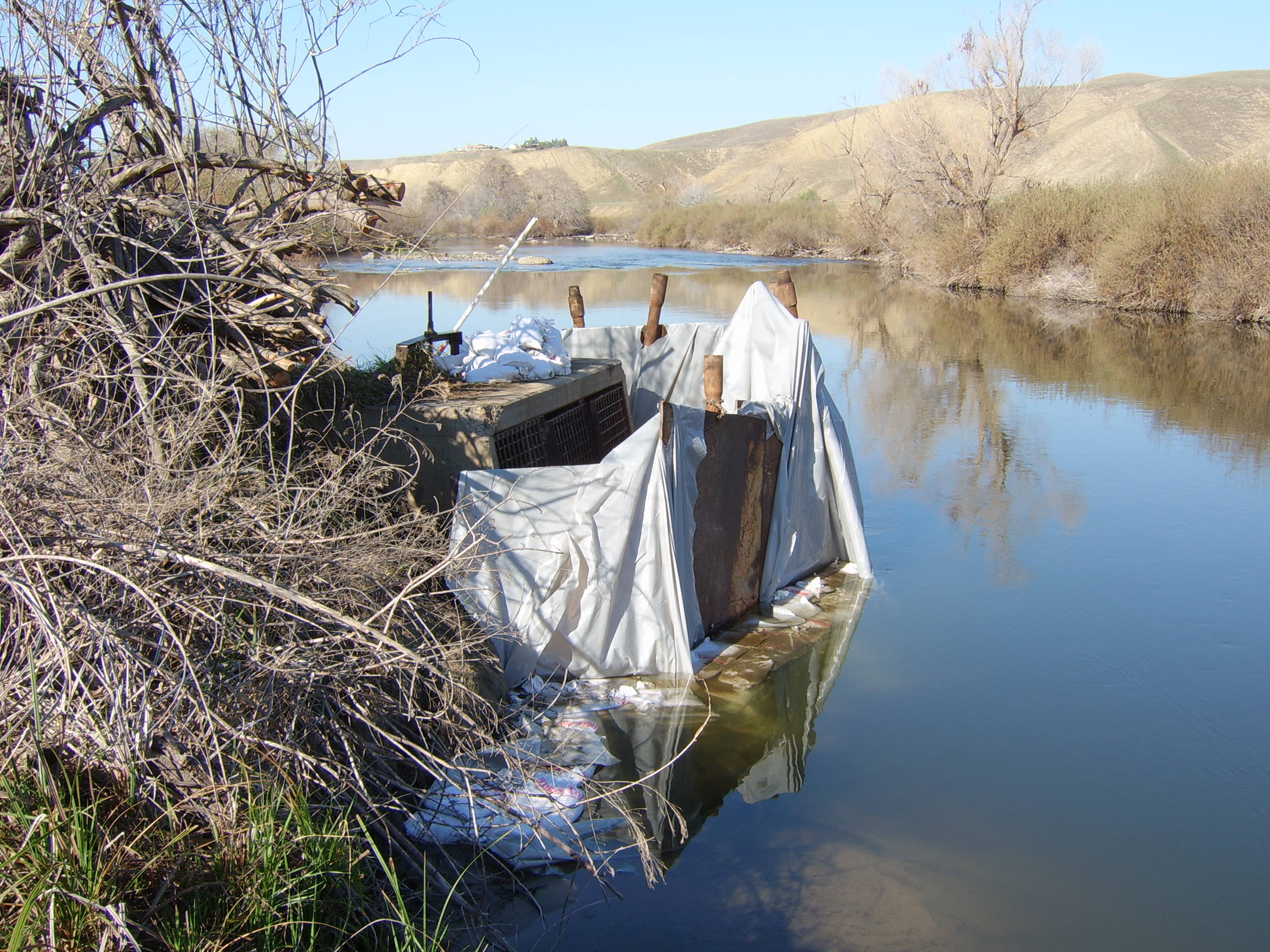
The contractor opted to utilize an alternative method after determining that the installed sandbag cofferdam system was not functioning properly. Given that the water depth was 6 feet or less within a 30-foot radius of the inlet structure, the contractor selected an 8ft tall by 155ft long single closed end (SCE) AquaDam to successfully de-water the project.
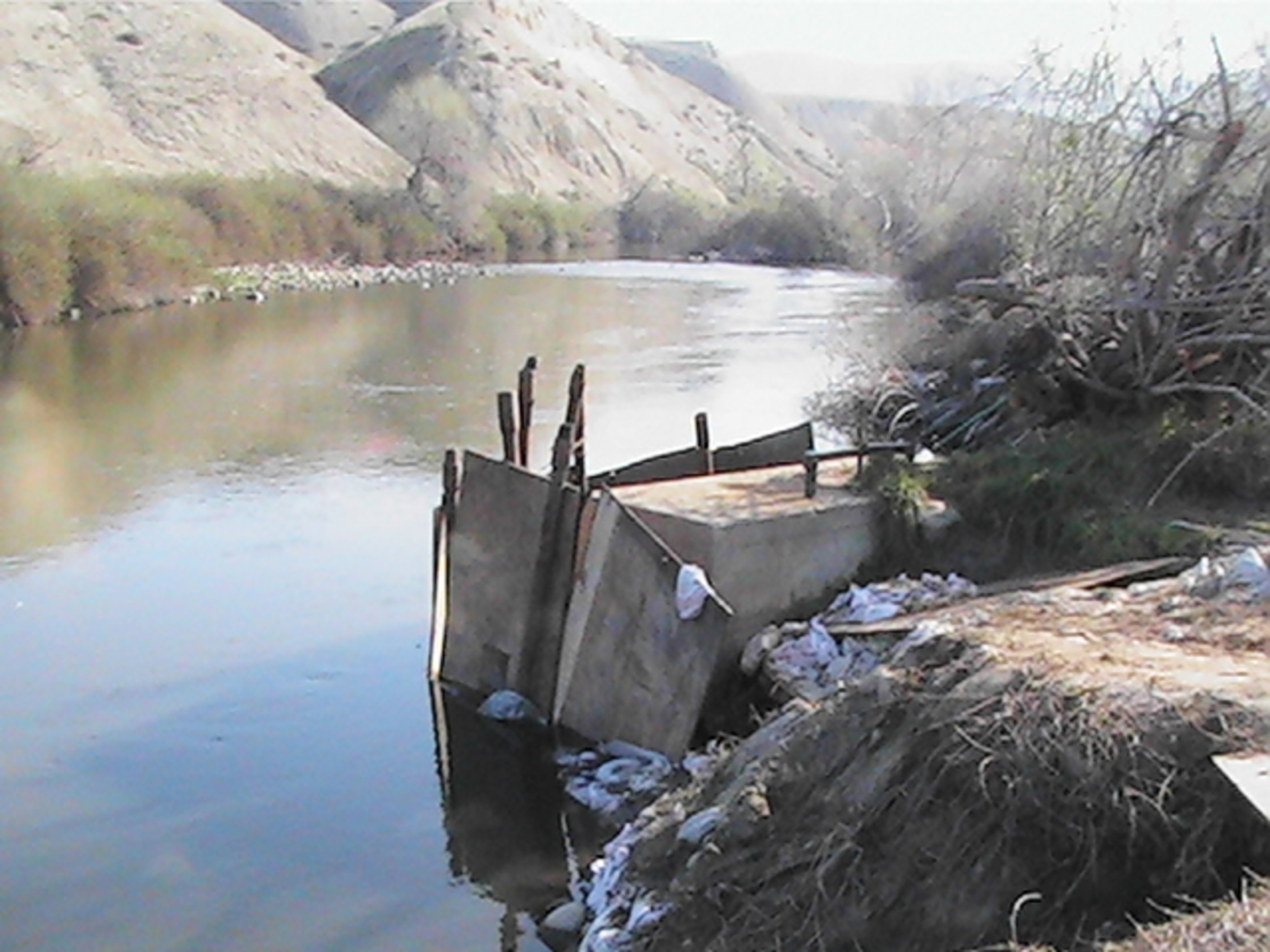
The workers have successfully removed the majority of the sandbags and all of the plastic sheeting.
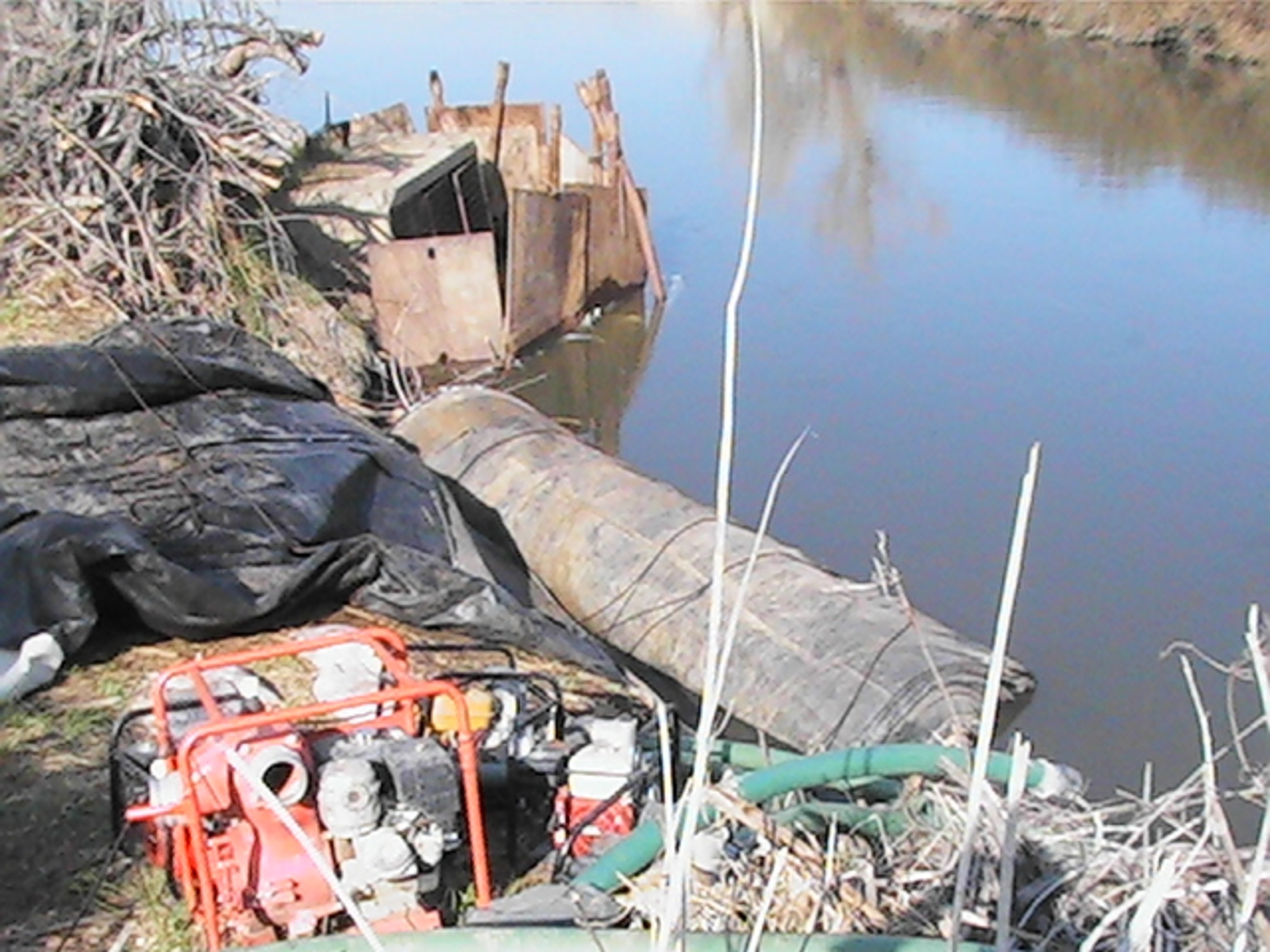
The 8ft tall SCE AquaDam has been launched from its starting bank. In order to properly install a SCE AquaDam, it is essential to have a starting bank that maintains the open end at a higher elevation than the full height of the AquaDam. The open end and fill-tubes of an SCE AquaDam must remain elevated above the dam's full height along its designated path. The AquaDam will only reach its maximum height at the lowest point along its designated path.
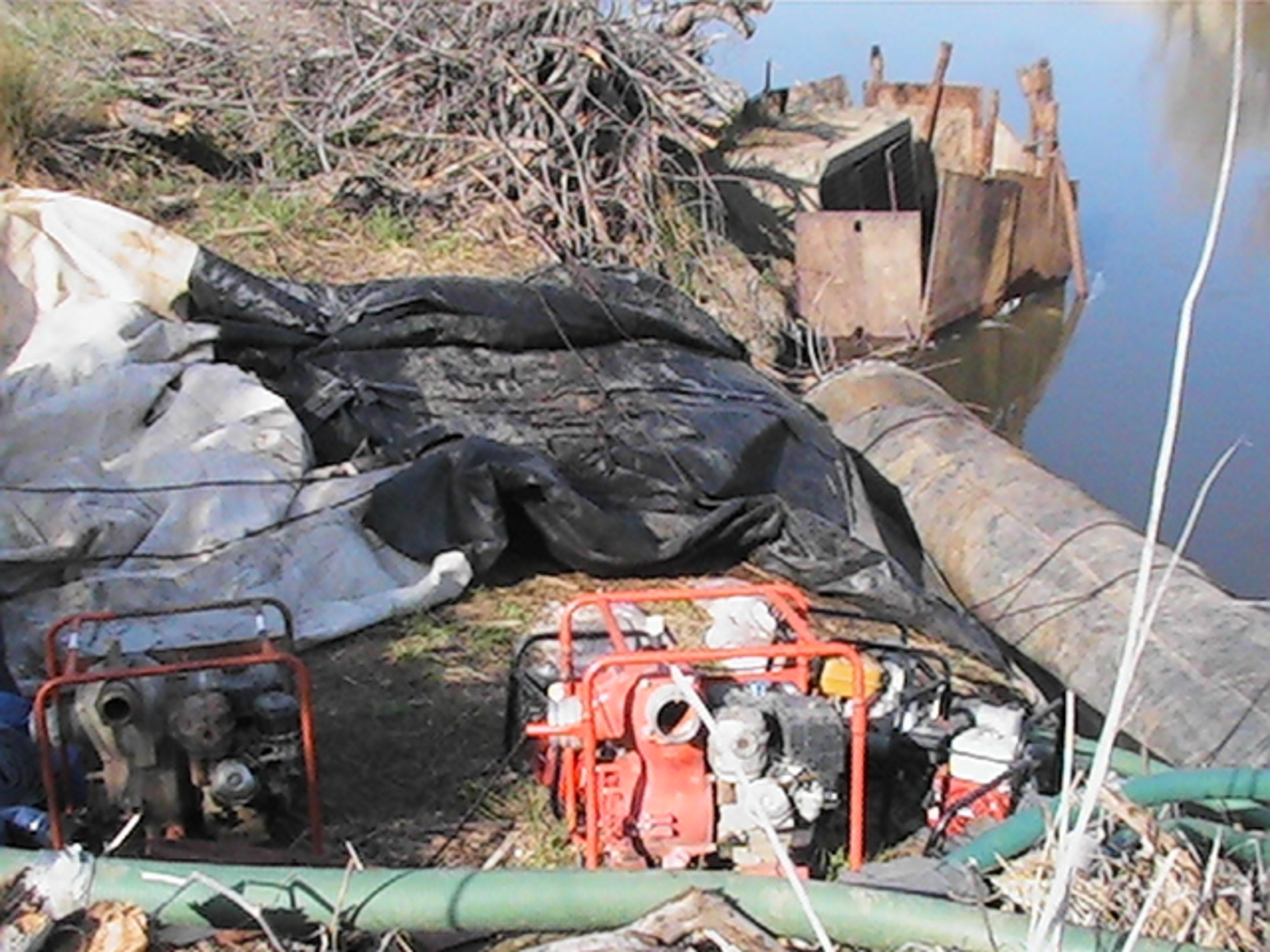
Workers insert discharge hoses from the pumps to fill the AquaDam with water.
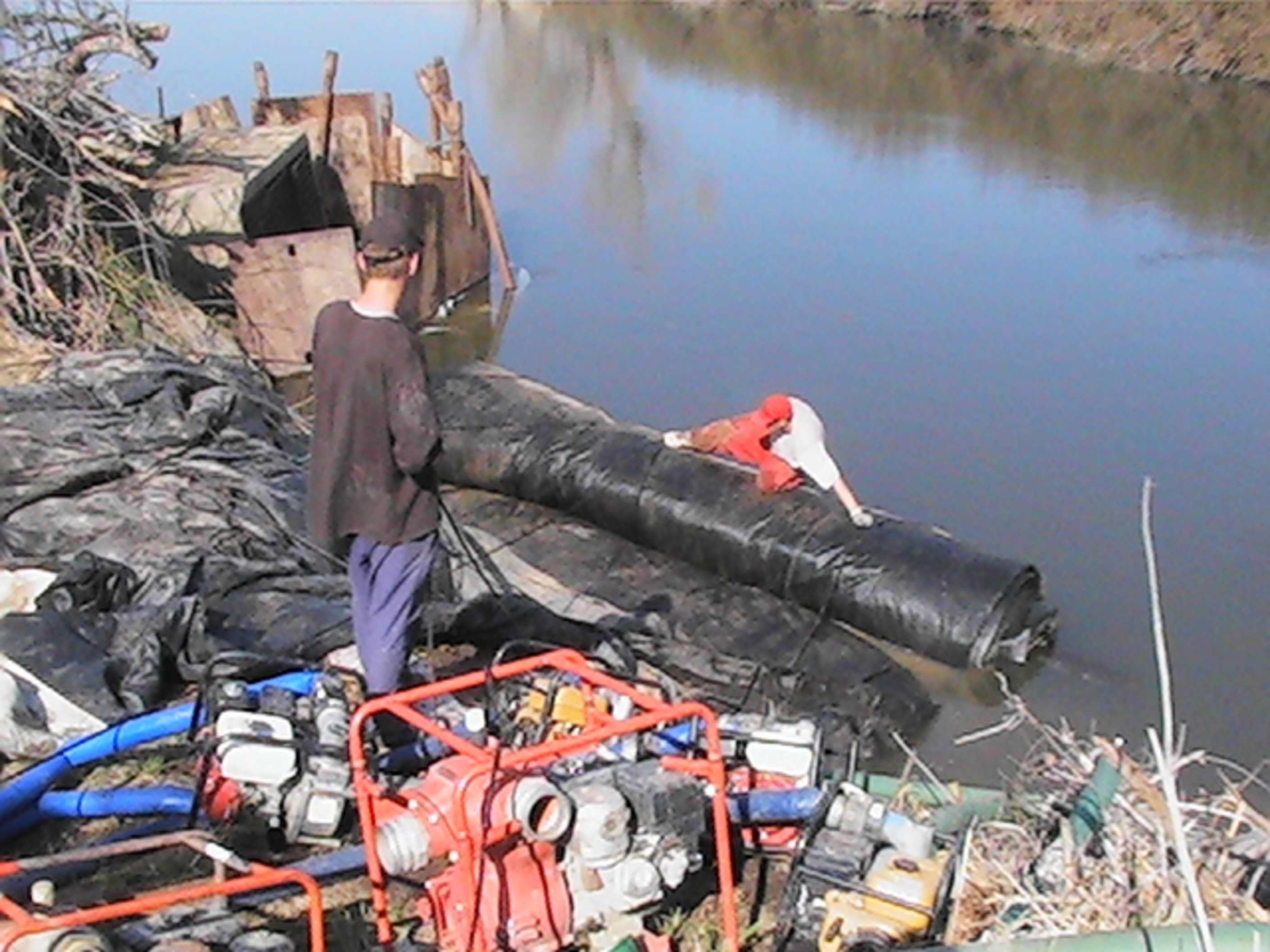
Ropes have been anchored at shore, run under the AquaDam, over top of the roll, and back to workers who control the roll while the dam is being filled with water. The ropes are used to hold back the roll, while the unrolled length fills and maintains head above the surrounding water.
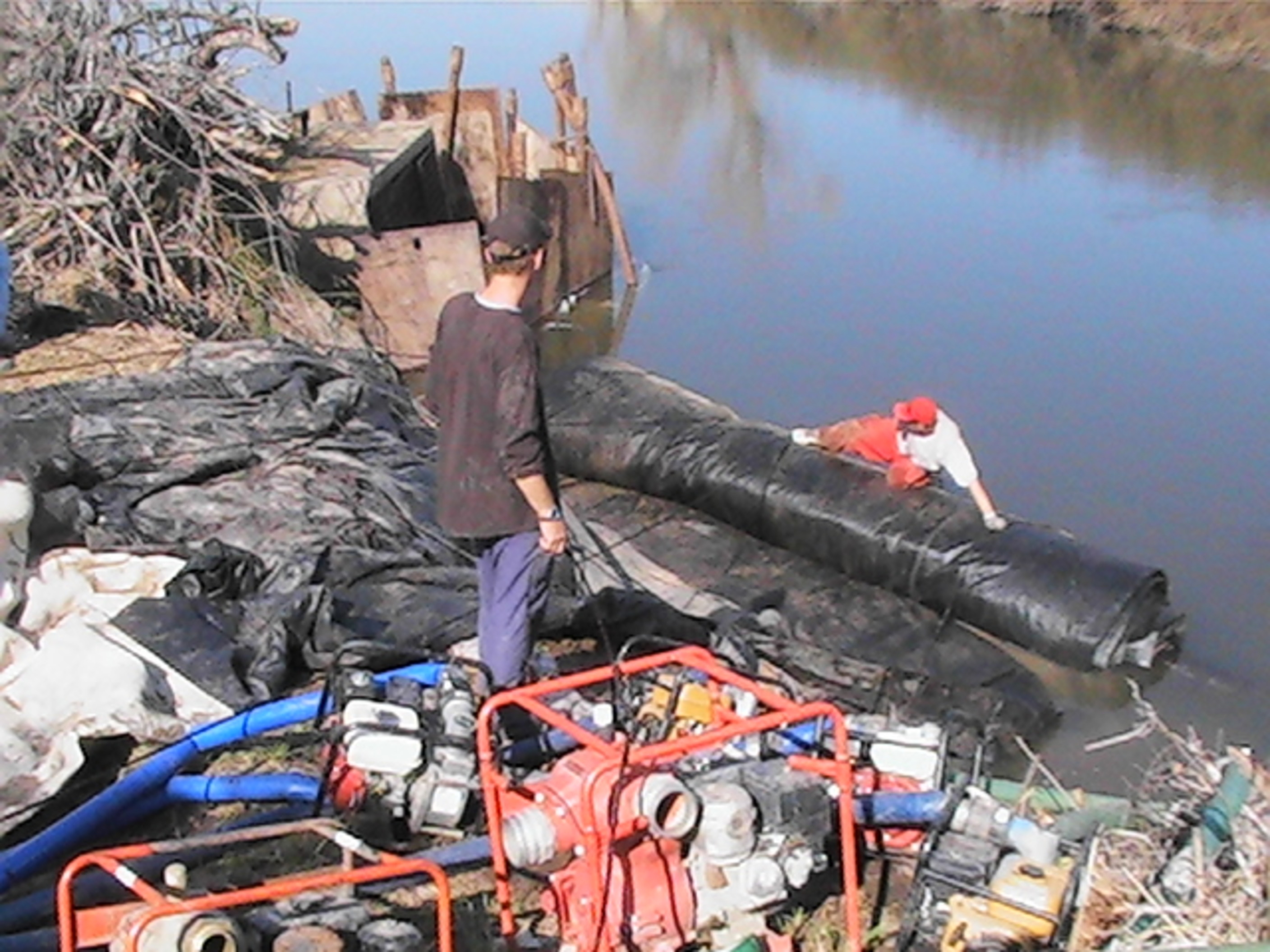
The worker on the roll keeps the ropes sliding off the roll. AquaDams are constructed from lightweight, flexible materials that allow them to float when empty in sufficiently deep water.
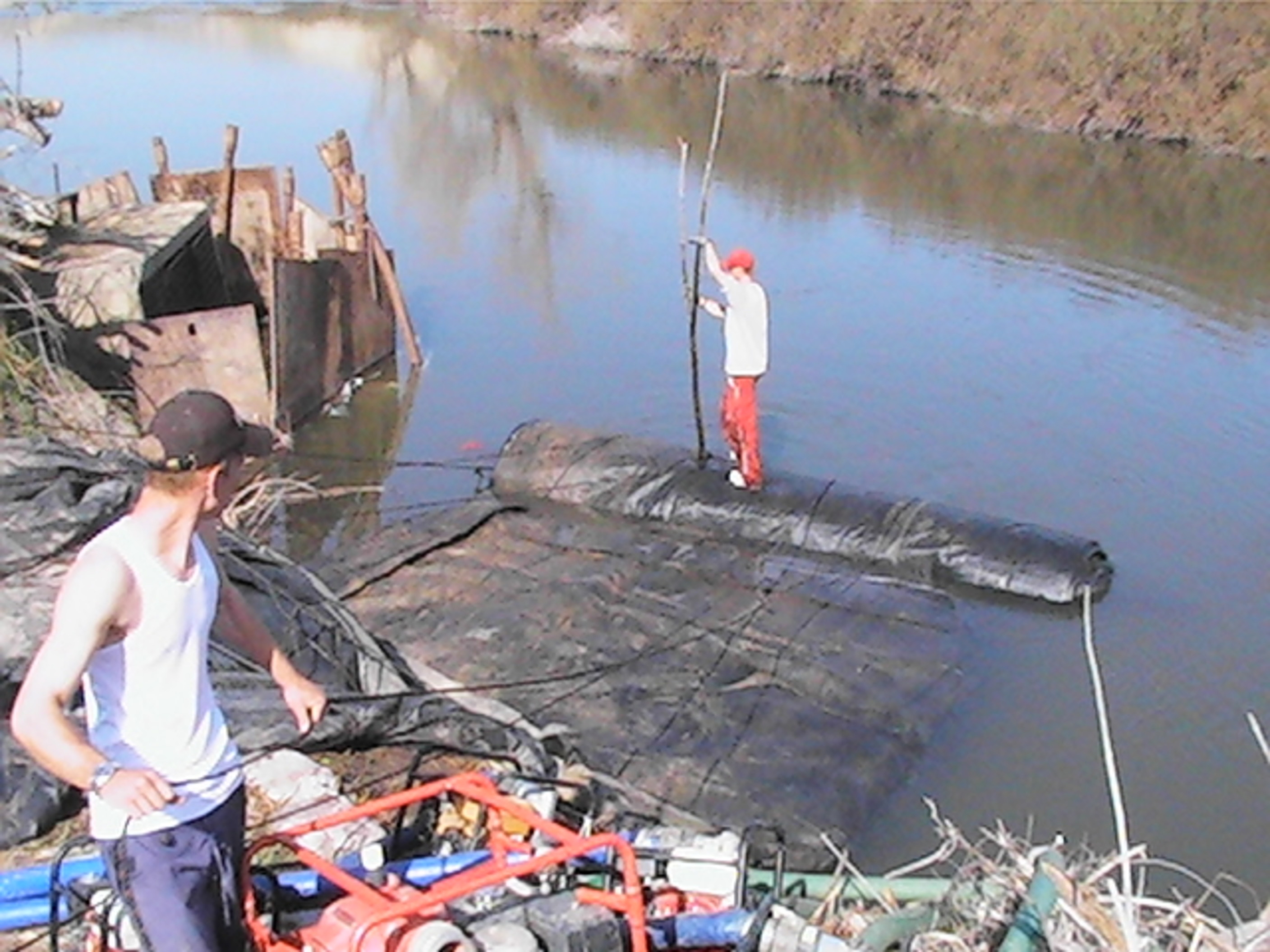
Once the unrolled length of the dam has several inches of head above the surrounding water, workers release a few feet of rope to unroll a few more feet of length. They then hold the ropes tight again and repeat the process until the dam reaches its ending bank.
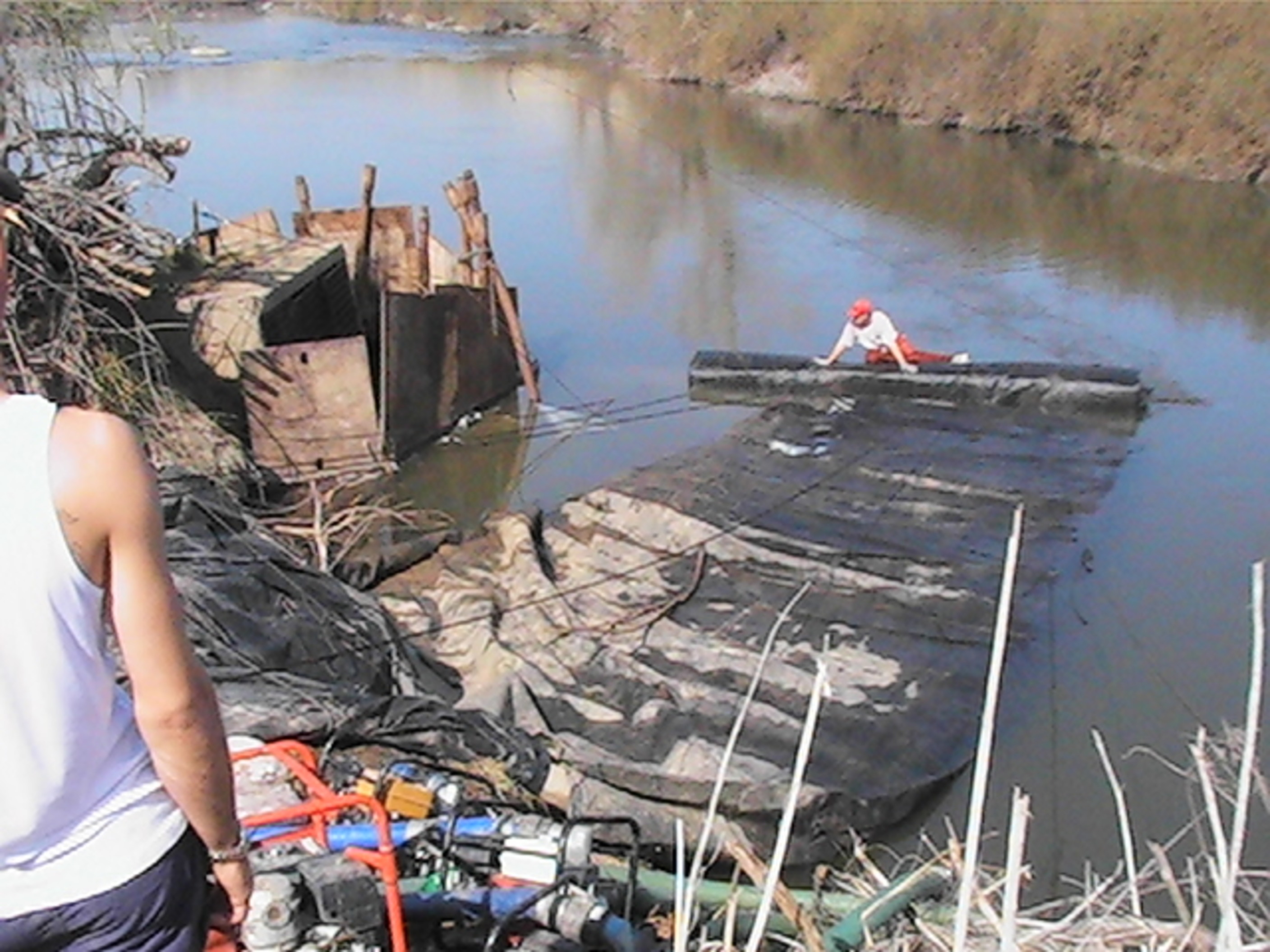
Workers are maneuvering the AquaDam to make a turn. It is important to observe the numerous ropes secured in various directions. Pulling on the ropes connected to the beam on which the AquaDam is rolled up will facilitate the turning process. Additionally, adjusting the pump(s) to reduce the water flow into the fill-tube on the inside of the turn while navigating will prove advantageous.
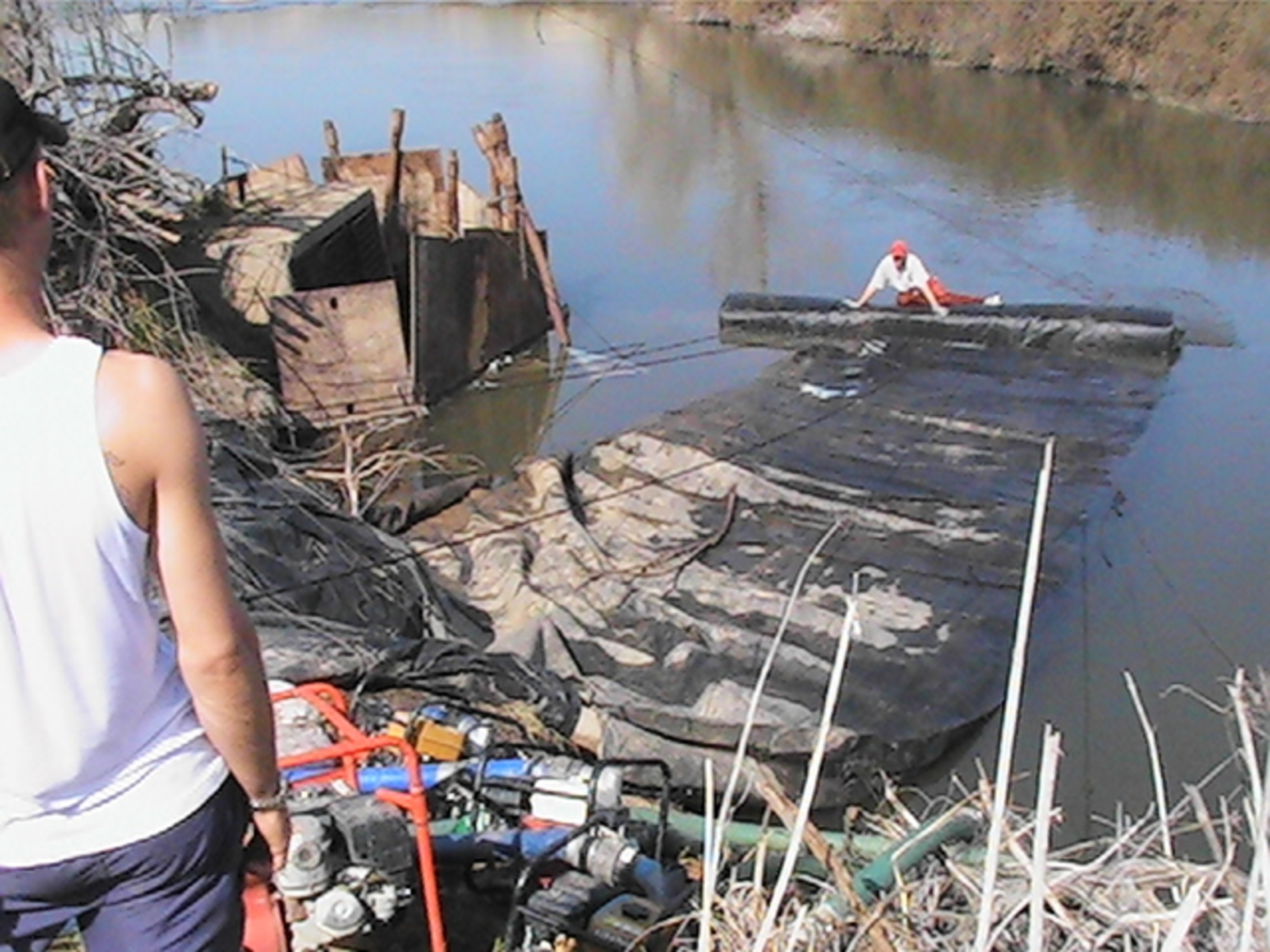
In order to properly position the AquaDam, it is sometimes necessary to use several hundred feet of rope to achieve the correct angle.
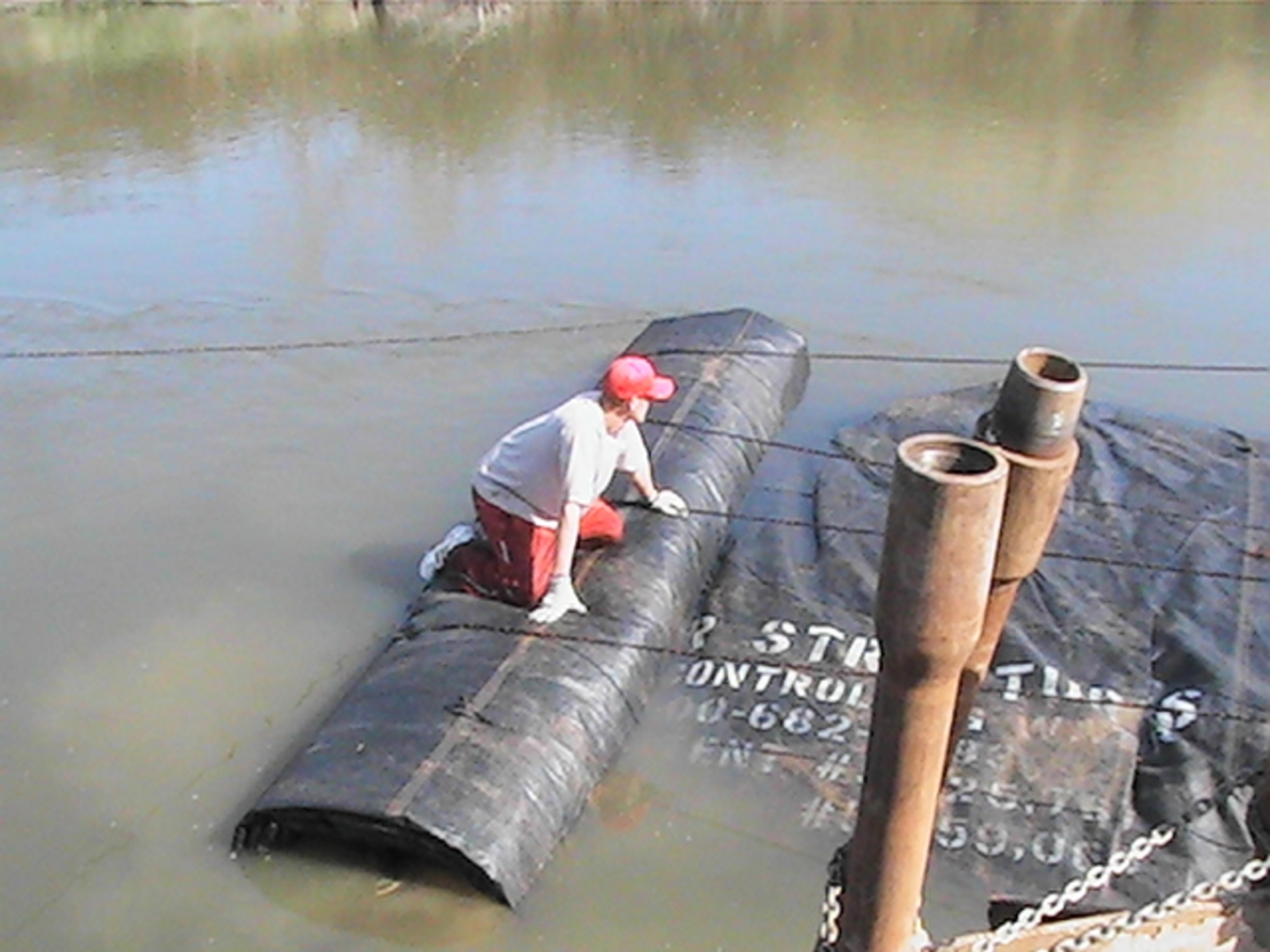
Workers had four ropes holding back the roll here and another that can be seen pulling in the opposite direction. There was also a rope, not seen here, under the water keeping the bottom side of the roll stationary for the turn.
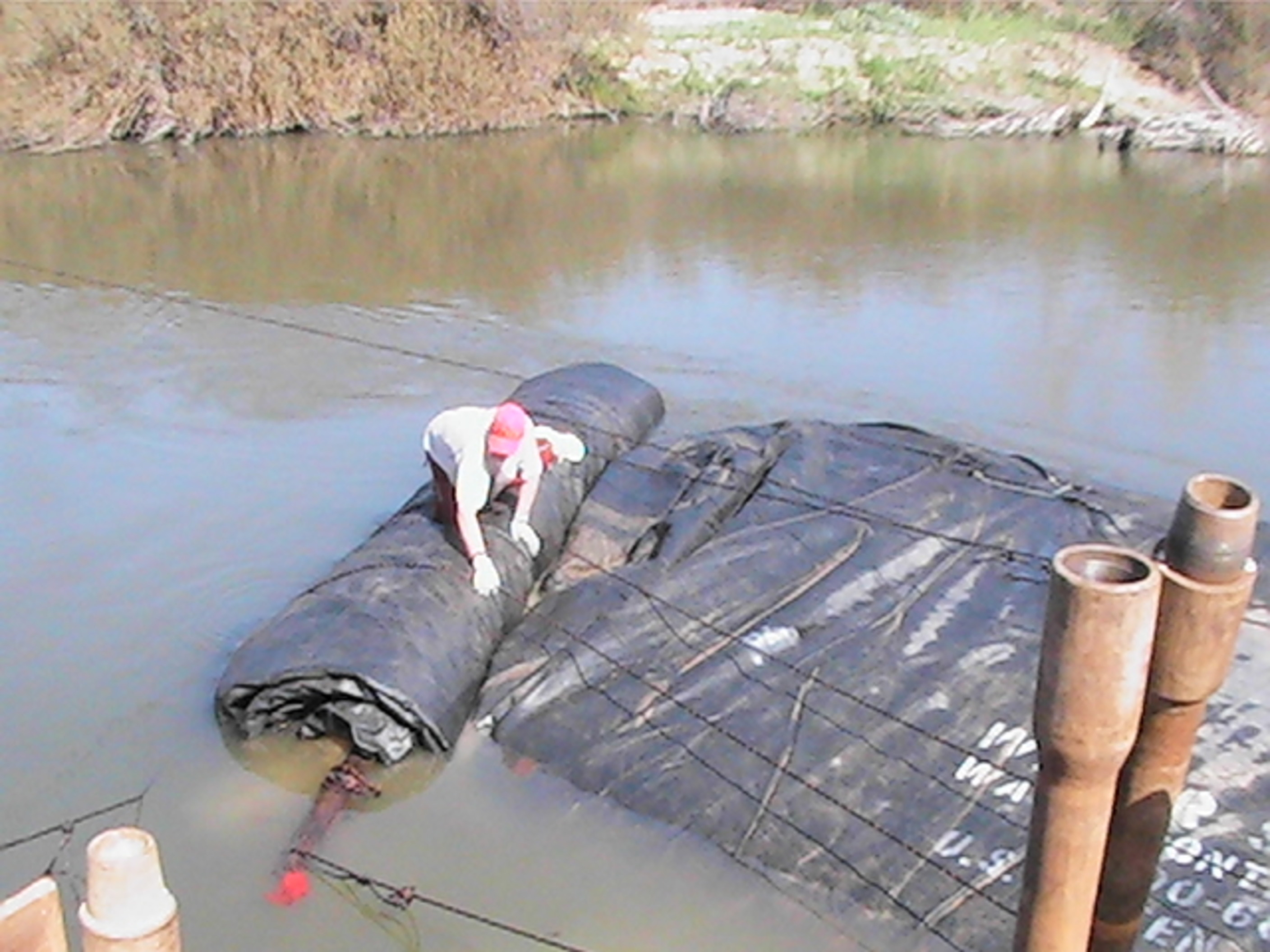
The rope used to secure the roll in place at the bottom is now visible.
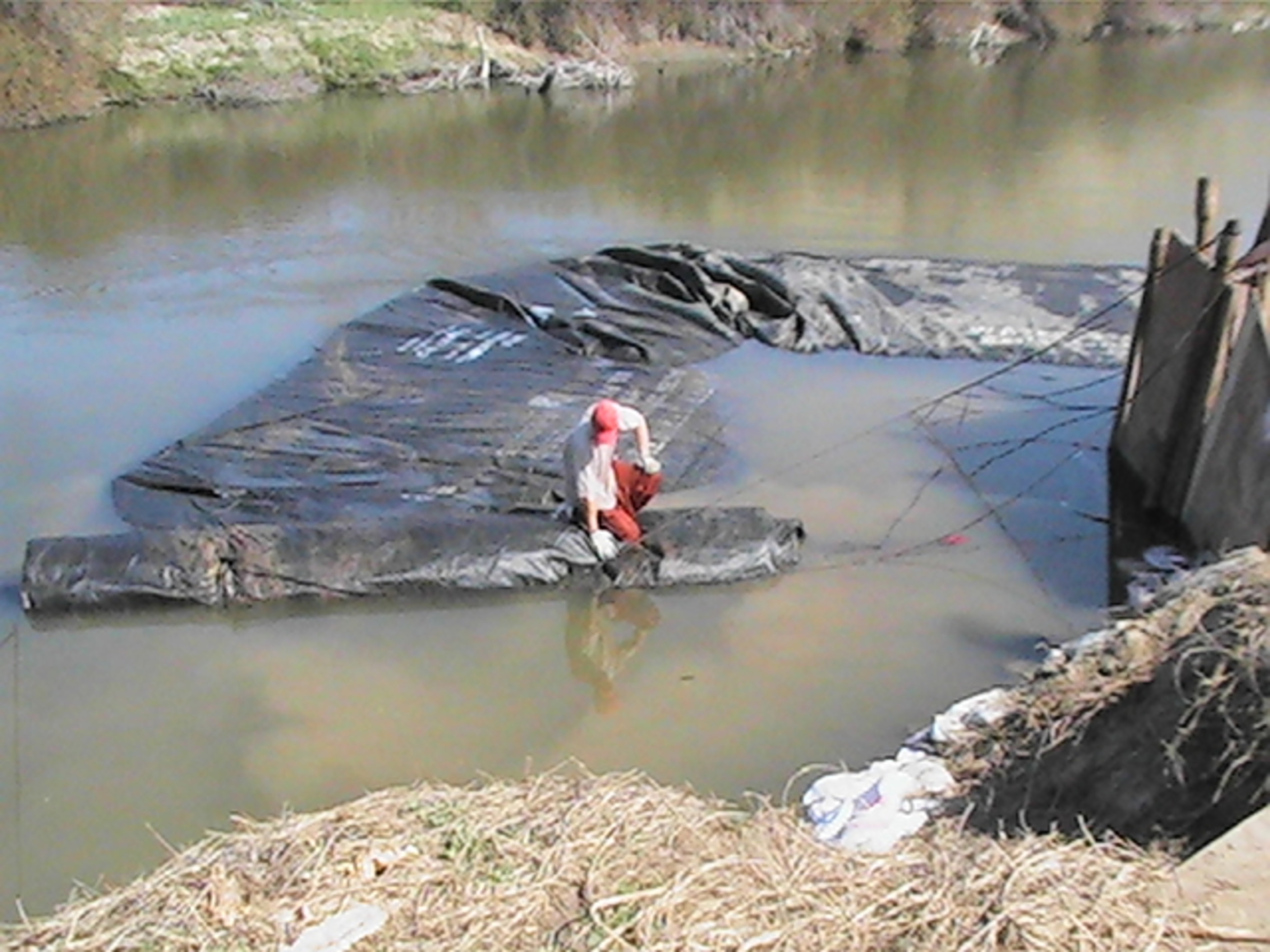
Workers have made all of the turns in the AquaDam and now the unit is headed towards it’s ending bank. The AquaDam has been installed in a horseshoe or “U” shape configuration.
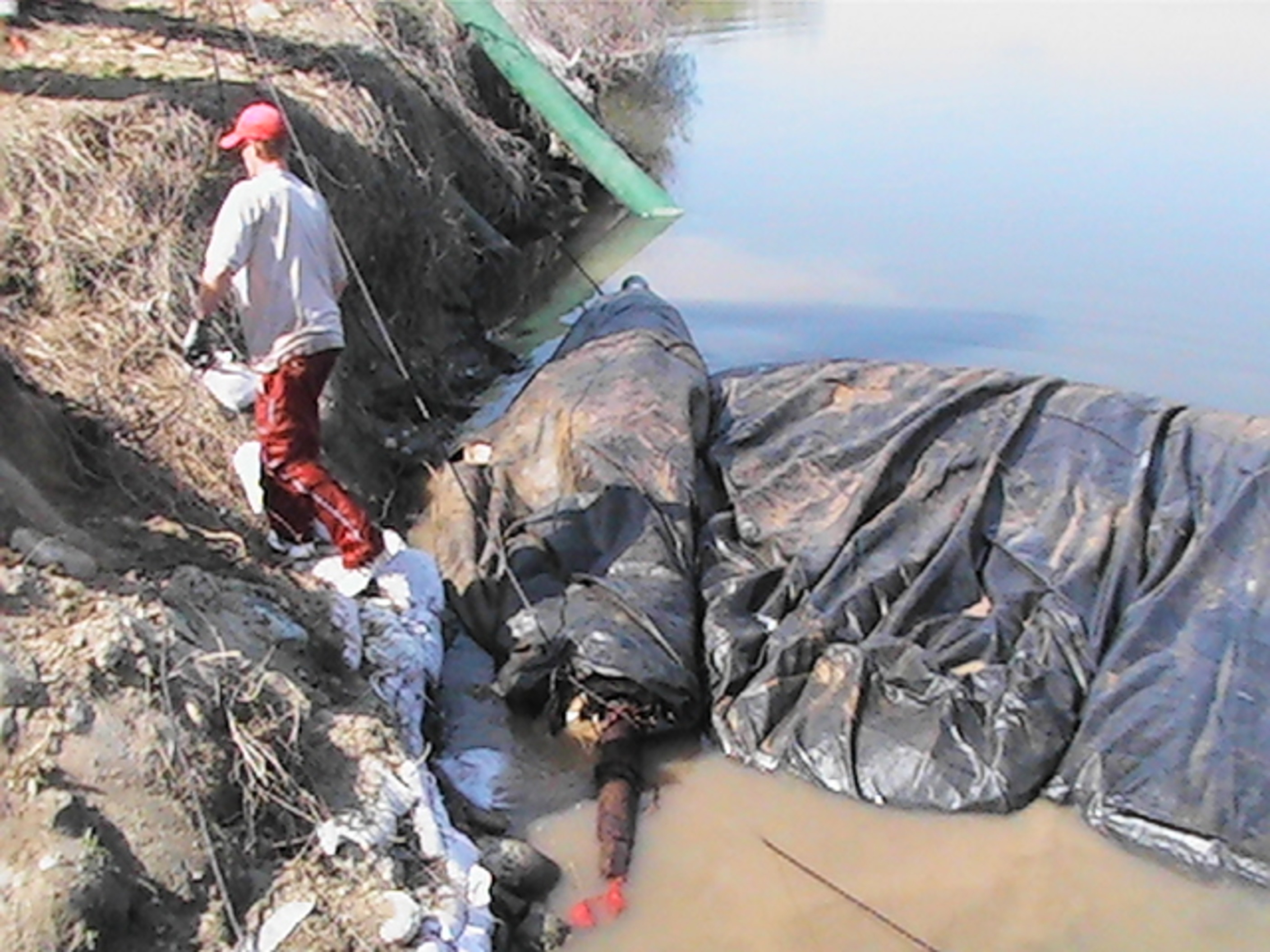
In order to ensure proper installation and maximum effectiveness of the AquaDam, it is imperative that it aligns with both the starting and ending banks at a perpendicular angle. This alignment is crucial for the successful construction of the cofferdam. Ropes are used to keep the roll in place.
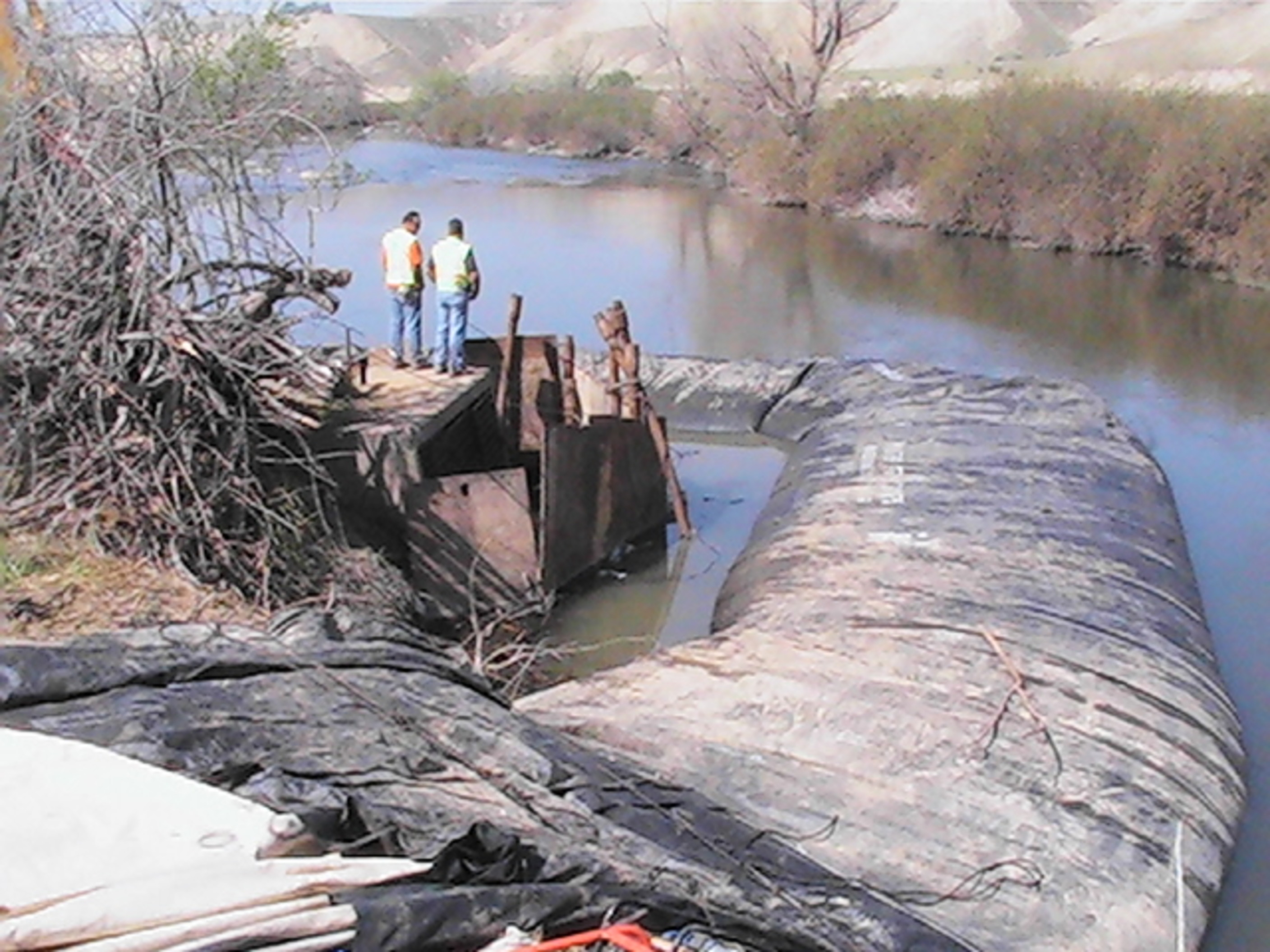
The 155ft long SCE AquaDam has now reached its final destination at the ending bank. The unit must now be filled to its designated height in order to complete the installation process.
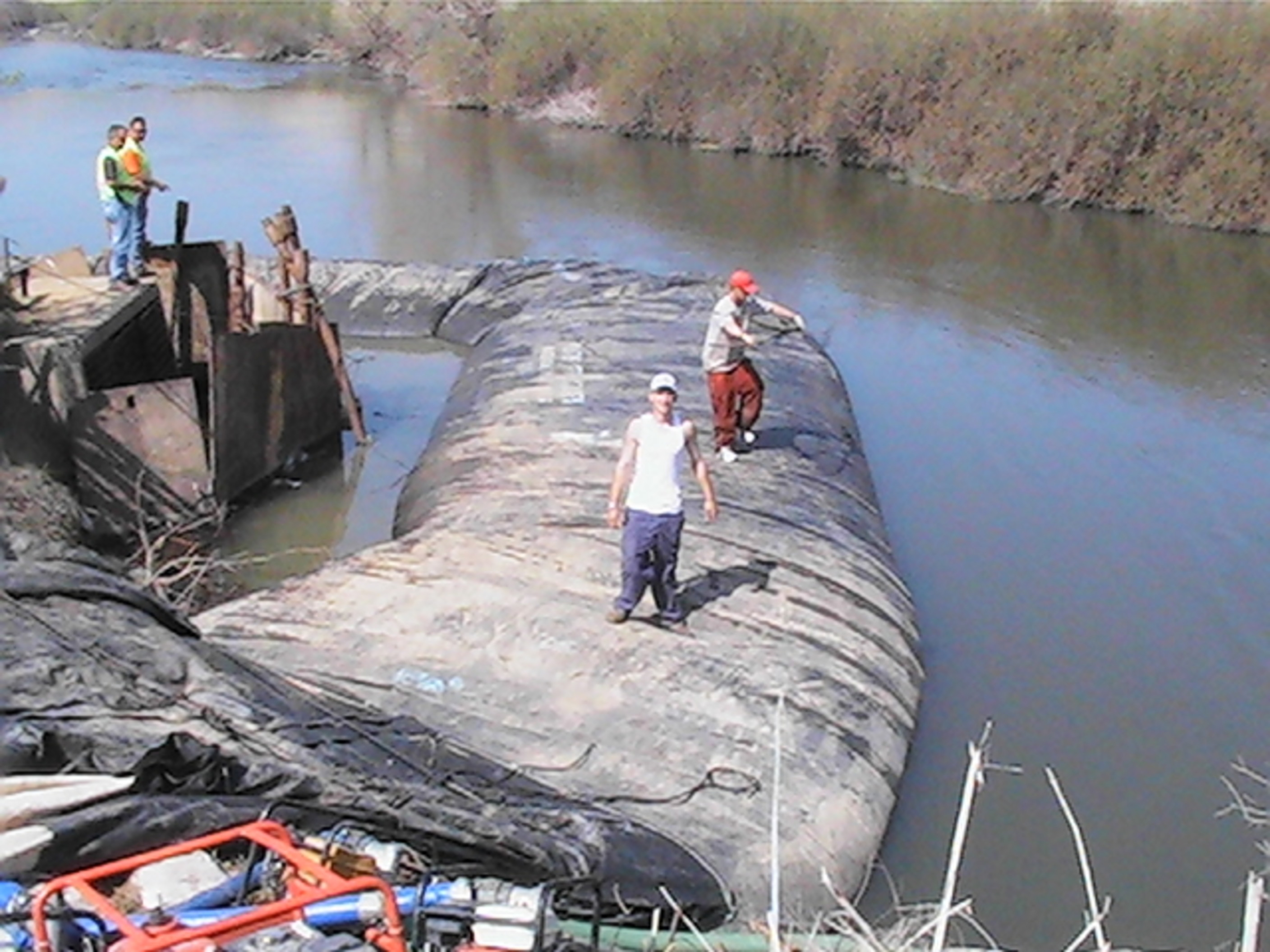
Once the AquaDam has been properly installed and has sufficient height above the surrounding water level, it provides a stable platform for workers, pumps, hoses, and other necessary equipment.
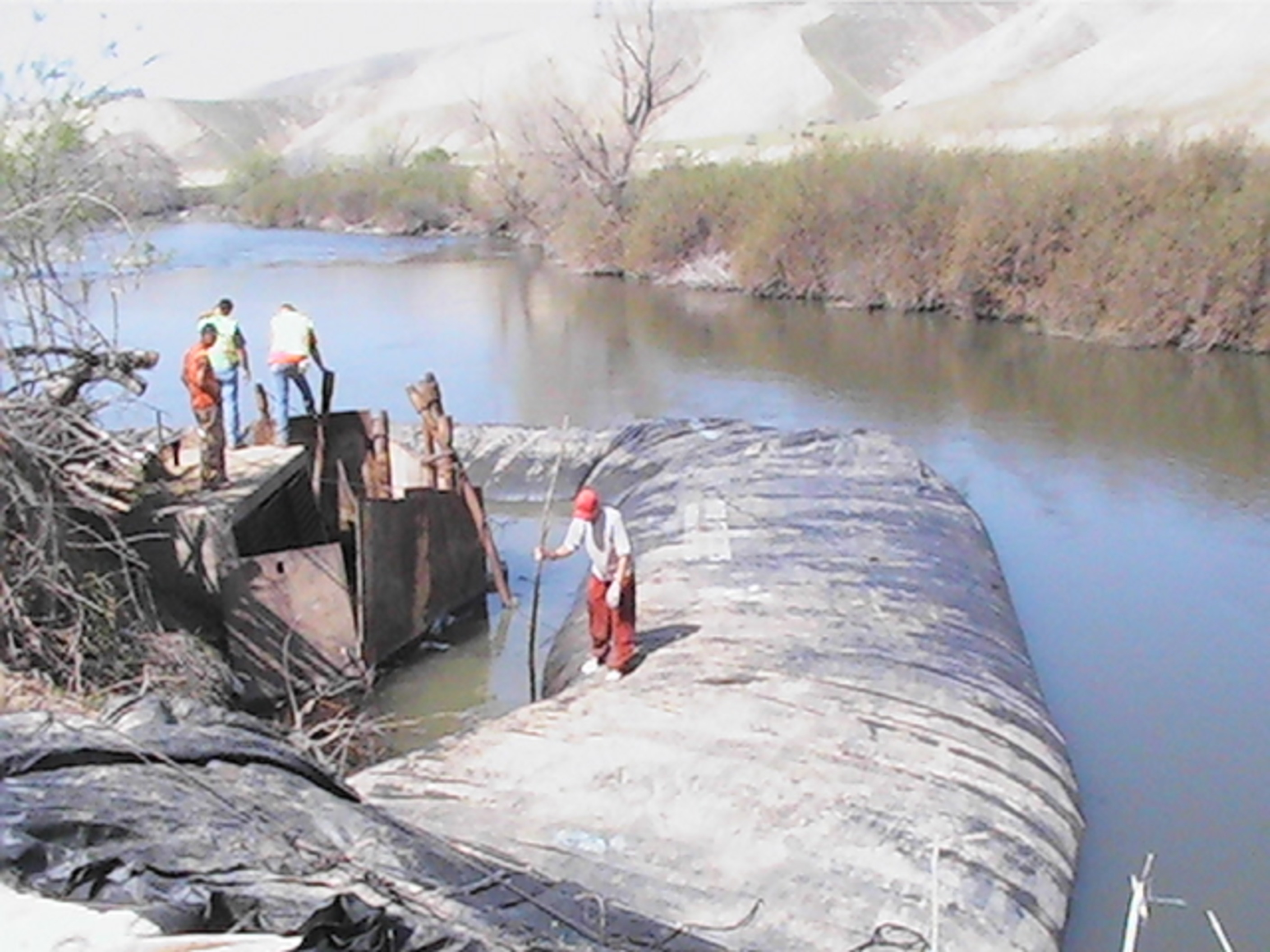
A worker checks the water depth as the AquaDam continues to be filled with water.
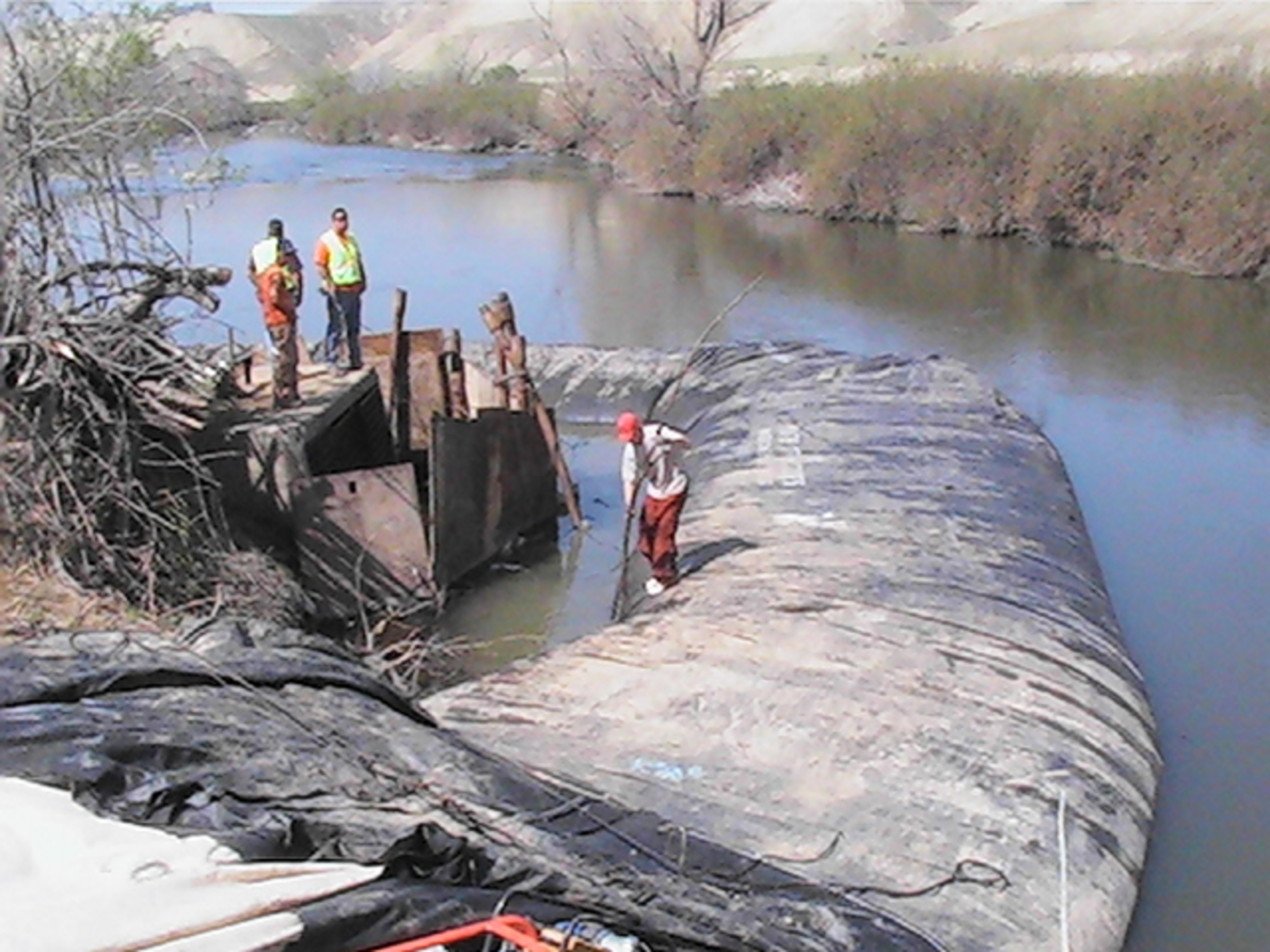
The 8ft tall SCE AquaDam is now almost full.
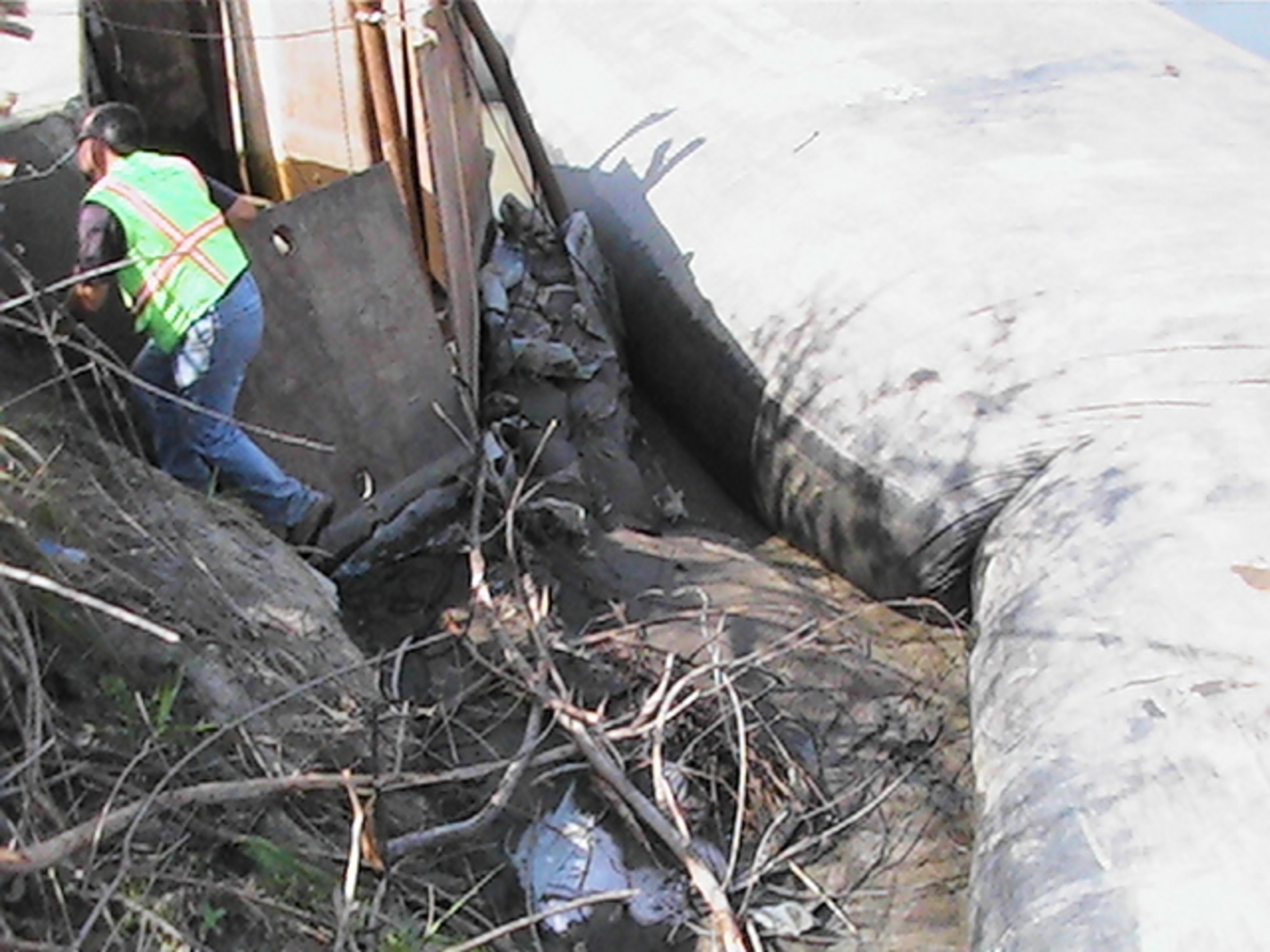
After some time had passed, the work area has been successfully de-watered.
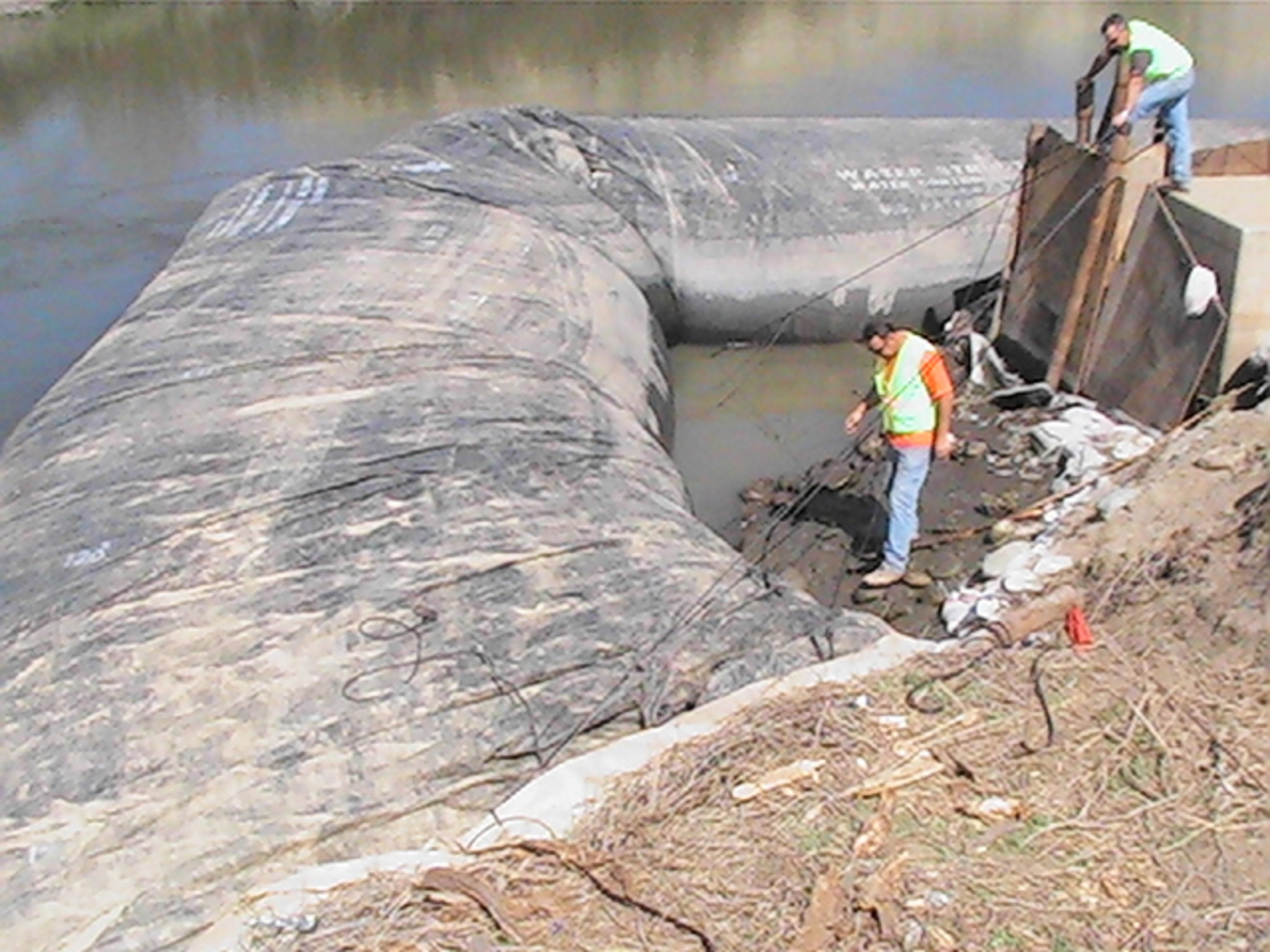
Here, we can observe the downstream end of the de-watered work area. Fantastic job everyone!
